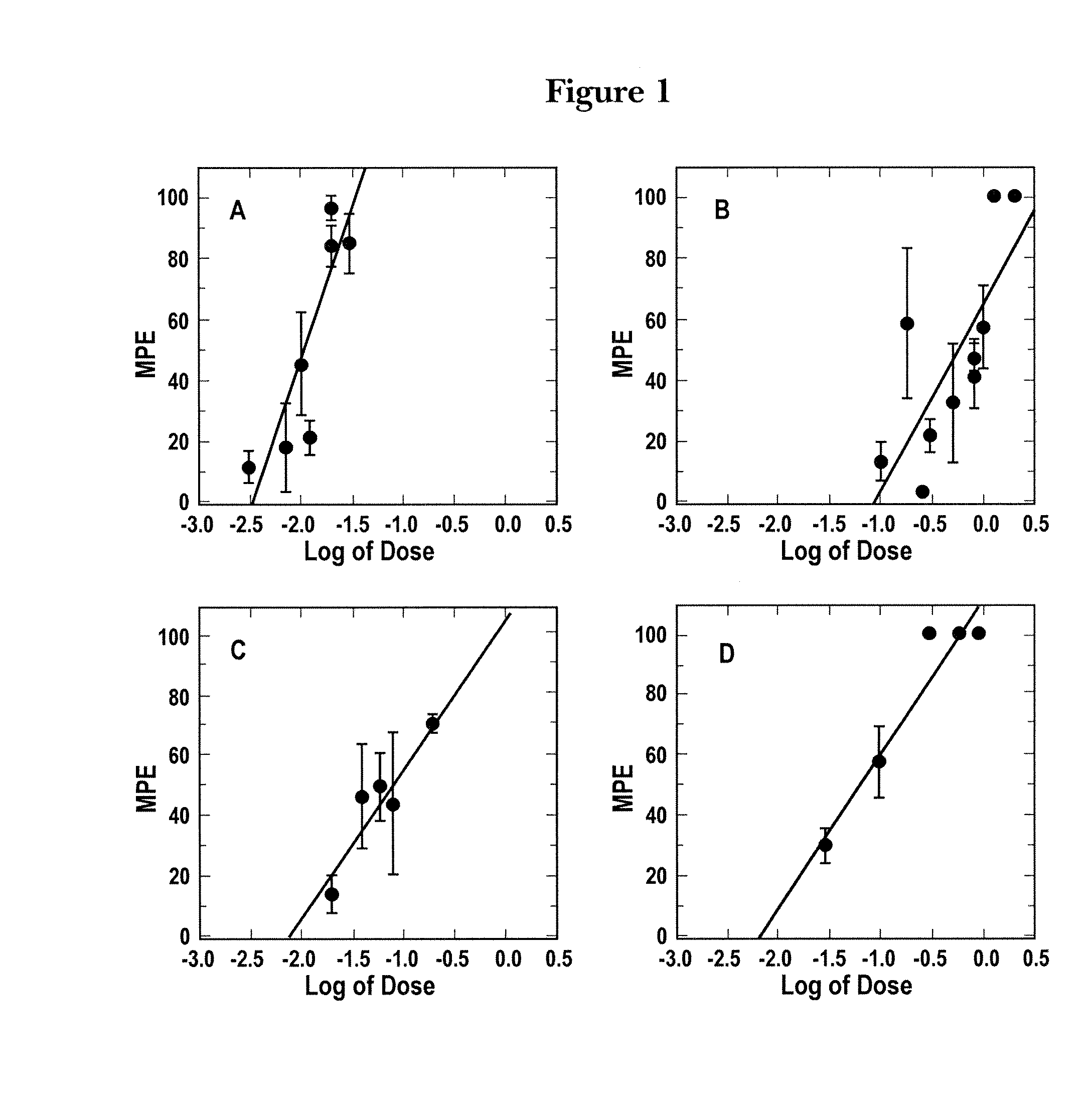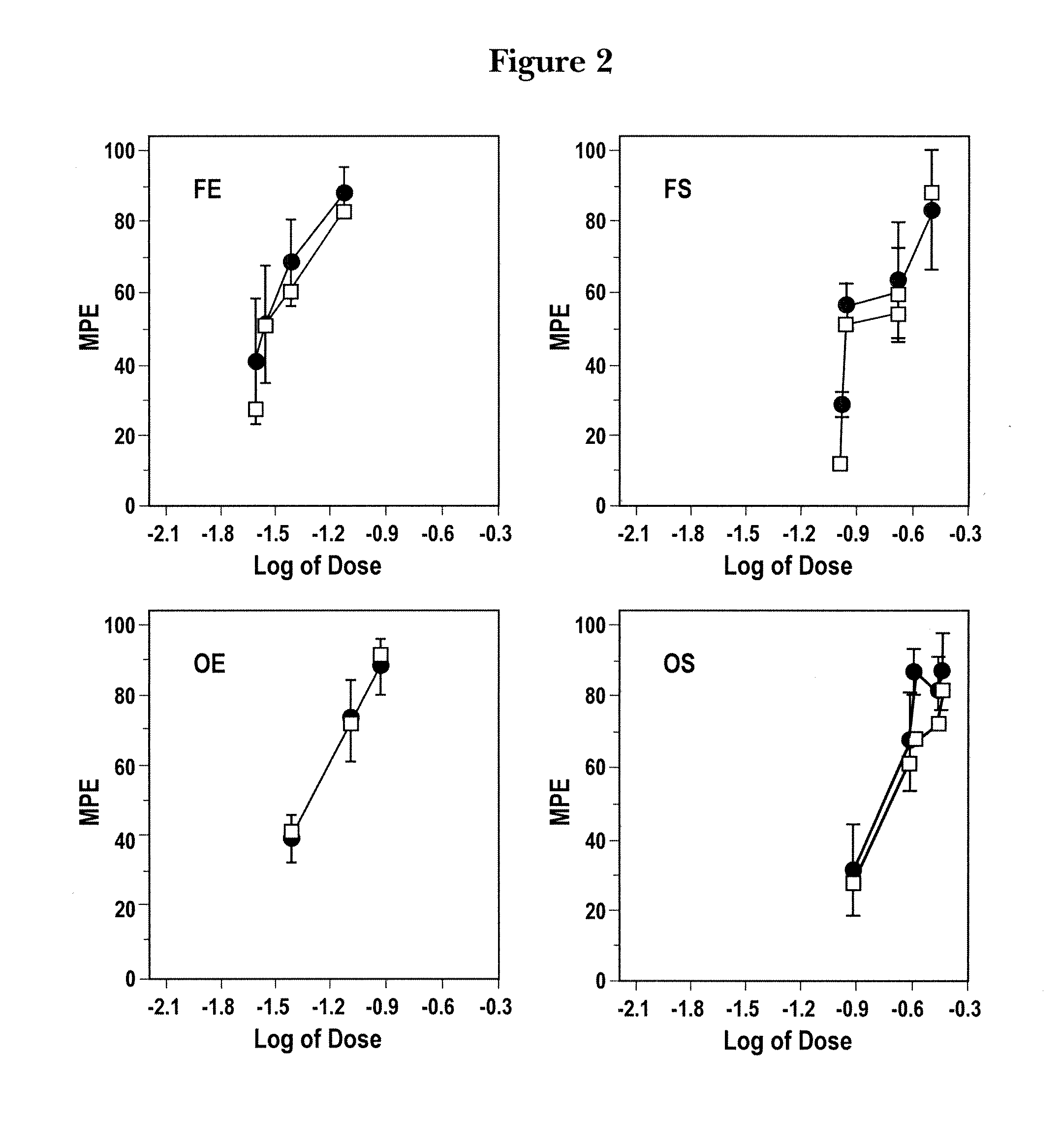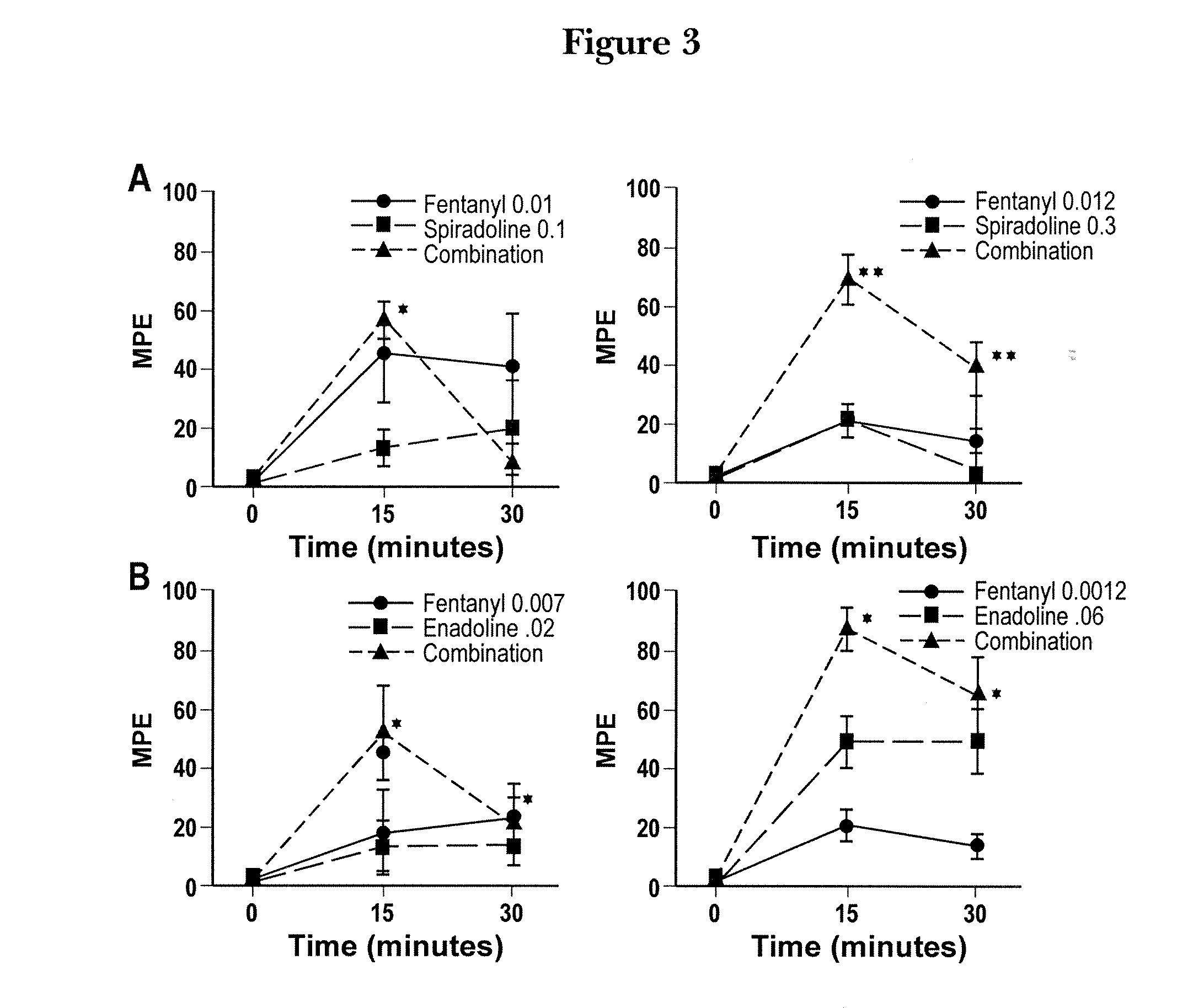Methods of Reducing Side Effects of Analgesics
a technology of opioid receptor and side effects, applied in the field of opioid receptor agonists and opioid receptor antagonists, can solve the problems of limited analgesic efficacy, low dependence/addiction liability, and hindered patient acceptance, so as to reduce gastrointestinal motility, induce antinociceptive effects, and reduce the resistance to toxins
- Summary
- Abstract
- Description
- Claims
- Application Information
AI Technical Summary
Benefits of technology
Problems solved by technology
Method used
Image
Examples
example 1
Colorectal Distension Assay
[0104]Sensitivity for pain was analyzed using the colorectal distension assay (CRD) as described by Sawyer et al., J Amer Hosp Assoc 1987; 23: 438-46 (1987). For the studies described herein, male Sprague-Dawley rats (about 220 rats) weighing 300 to 500 grams were approved for use by the All-University Committee on Animal Use and Care of Michigan State University in accordance with NIH standards. All animals were trained over a two-month period to adjust to insertion of a lubricated (KY Jelly, Skillman, N.J., USA) colonic balloon-catheter (Pointe Medical, Crown Point, Ind., USA) via the rectum. Subjects were preconditioned to lie quietly in a towel wrapped snugly around them and tolerate the catheter in place over extended periods. The animals were offered “treats” and subsequent “play and socializing time” on a large table top with cage mates among towels, boxes and tubes (“toys”) in order to reduce the stress induced by the testing paradigms. These play ...
example 2
Antinociceptive Responses of Combinations of Opioid Agonist
[0113]To analyze the antinociception (ANC) for several opioid agonists, the theoretical sums of these agonists in the CRD assay were determined. Individual mean log-dose-response patterns (±SEM) in the CRD assay for fentanyl, spiradoline, enadoline, and oxymorphone formed linear slopes ranging from just significant to full antinociception (ANC) with little deviation (FIG. 1). Fentanyl duration was 50 minutes with an ED50 of 0.01 mg / kg (range: 0.06-0.016) and a peak effect at 15 minutes post injection (FIG. 1A). Spiradoline duration was 2 hours with an ED50 of 0.56 mg / kg (range: 0.25-1.26) and a peak effect at 15 minutes post injection (FIG. 1B). Oxymorphone and enadoline served as typical-class reference comparisons. Enadoline (kappa-opioid receptor agonist)had a ED50=0.077 (0.04-0.2) and a peak effect at 30 minutes post-injection (FIG. 1C). Oxymorphone (mu-opioid receptor agonist) had an ED50=0.078 (0.02-0.126) and a peak e...
example 3
Antinociceptive Responses for Combined Agonists and Antagonists
[0119]The high-dose combination of fentanyl plus spiradoline resulted in supra-additive interactions at both time periods tested (15 and 30 minutes post injection, FIG. 3 left-hand panel A). Tests of the other dose combinations formed additive response patterns. The single low dose of fentanyl in panel A scored a higher M.P.E. (45, 15 minutes) than the single high dose of fentanyl (18, 15 minutes). Fentanyl “freezing” behavior (catalepsy) was not observed in this study. FIG. 4 presents the single antinociceptive-dose effects of fentanyl (0.012 mg / kg), spiradoline (0.3 mg / kg), and the combined-dose effects of opioid receptor agonists after saline pretreatment, beta-funeltrexamine (β-FNA) pretreatment, or nor-binaltorphimine (n-BNI) pretreatment in three “Sets” of rats (9 groups in all).
[0120]As shown in FIG. 4A, the combination of fentanyl and spiradoline after saline pretreatment induced a significantly greater analgesic...
PUM
| Property | Measurement | Unit |
|---|---|---|
| chemical | aaaaa | aaaaa |
| mechanical | aaaaa | aaaaa |
| time | aaaaa | aaaaa |
Abstract
Description
Claims
Application Information
 Login to View More
Login to View More - R&D
- Intellectual Property
- Life Sciences
- Materials
- Tech Scout
- Unparalleled Data Quality
- Higher Quality Content
- 60% Fewer Hallucinations
Browse by: Latest US Patents, China's latest patents, Technical Efficacy Thesaurus, Application Domain, Technology Topic, Popular Technical Reports.
© 2025 PatSnap. All rights reserved.Legal|Privacy policy|Modern Slavery Act Transparency Statement|Sitemap|About US| Contact US: help@patsnap.com



